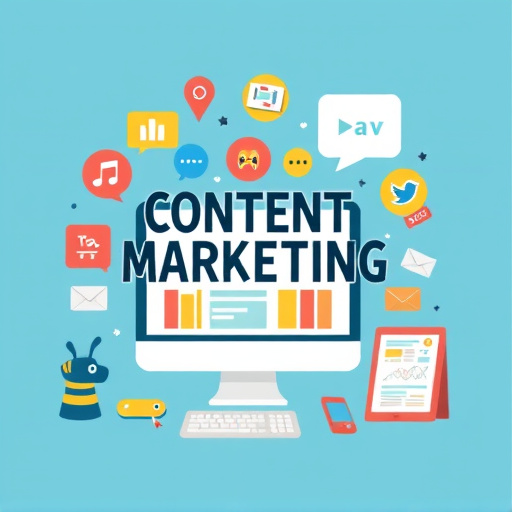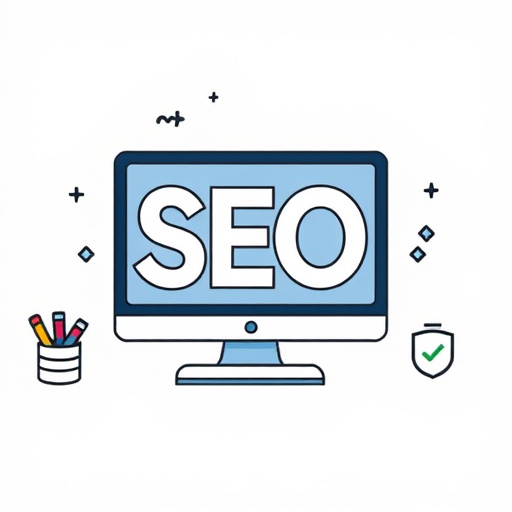Category: on-page SEO optimization
On-Page SEO Optimization: Unlocking Search Engine Visibility
Introduction
Welcome to an in-depth exploration of on-page SEO optimization, a cornerstone strategy for enhancing online content’s search engine visibility and user engagement. This article aims to guide you through the intricate world of optimizing web pages to rank higher on search engine results pages (SERPs). We will demystify the process, highlighting its importance, key elements, global impact, and future potential. By the end, readers should have a comprehensive understanding of how on-page SEO shapes digital experiences and drives business success.
Understanding On-Page SEO Optimization: The Cornerstone of Digital Visibility
Definition and Core Components
On-page SEO optimization refers to the practice of refining individual web pages to increase their relevance and authority in search engine results. It involves optimizing various elements within a page’s HTML source code, content, and structure to align with search engines’ criteria for ranking webpages. The core components include:
- Title Tags: Unique and descriptive titles that summarize the page’s content, appearing as clickable links on SERPs.
- Meta Descriptions: Concise summaries under title tags, enticing users to click while providing a snapshot of content.
- Header Tags (H1-H6): Hierarchical headings structuring content, with H1 representing the main heading and subsequent headers organizing subtopics.
- Content Optimization: Creating high-quality, relevant, and engaging content that satisfies user search intent.
- URL Structure: Crafting readable and keyword-rich URLs that reflect page content.
- Internal Linking: Strategically linking to other relevant pages within the same website to enhance navigation and distribute link equity.
- Image Optimization: Optimizing image file names, alt tags, and sizes for better accessibility and searchability.
- Schema Markup: Implementing structured data to help search engines understand content better and potentially improving rich snippet visibility.
Historical Context and Significance
The concept of on-page SEO optimization has evolved significantly since the early days of the internet. Search engines like Google have consistently refined their algorithms, placing increasing emphasis on user experience and content quality. In the past, keyword stuffing and black-hat SEO tactics dominated the landscape. However, search engines’ efforts to combat these practices have led to a more nuanced understanding of on-page optimization. Today, it is about creating valuable, relevant content that satisfies both users and search engine criteria.
On-page SEO plays a crucial role in:
- Driving Organic Traffic: Optimized pages are more likely to rank higher, attracting organic visitors from search engines.
- Enhancing User Experience: Well-optimized pages load faster, offer clear navigation, and provide valuable content, leading to lower bounce rates and longer user sessions.
- Building Brand Authority: Consistent on-page optimization contributes to establishing a website’s credibility and expertise in its niche.
- Competitive Advantage: In highly competitive markets, on-page SEO can set businesses apart by improving their online visibility and attracting target audiences.
Global Impact and Trends: A World of Optimization
International Influence
On-page SEO optimization is not limited to any specific region; it is a global practice that adapts to local languages, cultures, and search behaviors. Different countries have unique challenges and opportunities in this domain:
| Region | Considerations | Opportunities |
|---|---|---|
| North America (US & Canada) | Competing with established, authoritative sites. Emphasis on long-tail keywords and content variety. | Leveraging local SEO tactics for better regional visibility. Utilizing e-commerce optimization for high-value products/services. |
| Europe | Adhering to strict privacy laws (GDPR). Optimizing for multiple languages and diverse cultural preferences. | Targeting niche markets with specialized, localized content. Exploiting structural features like long-form articles and infographics. |
| Asia (China & Japan) | Navigating complex character-based search engines. Understanding local trends and user behavior. | Incorporating micro-moments and voice search optimization. Leveraging social media platforms for content promotion. |
| Latin America | Dealing with varying internet penetration rates. Optimizing for mobile-first users. | Focusing on educational and informational content. Utilizing local influencers and community engagement strategies. |
Key Global Trends Shaping On-Page SEO
- Mobile Optimization: With the majority of global internet users accessing search engines via mobile devices, optimizing for mobile usability is essential. Responsive design, fast loading times, and mobile-friendly content are paramount.
- Voice Search Integration: The rise of voice assistants like Siri and Alexa has led to a shift in user queries. Optimizing for long-tail keywords and natural language processing improves visibility in voice search results.
- Local SEO Dominance: Local businesses are leveraging on-page optimization to rank higher in local search results, targeting nearby customers with relevant, location-specific content.
- Content Diversity: Websites that offer a variety of content formats (blog posts, videos, infographics) tend to perform better, catering to diverse user preferences and search patterns.
- Structured Data Adoption: Implementing schema markup helps search engines understand complex data types, potentially leading to enhanced content display in SERPs.
Economic Considerations: SEO as a Business Driver
Market Dynamics and Investment Patterns
On-page SEO optimization is a significant investment for businesses aiming to enhance their online presence. The market for SEO services has experienced substantial growth, with a global expenditure of billions of dollars annually. This trend reflects the increasing recognition of SEO as a vital component of digital marketing strategies:
- Small Businesses: Many startups and SMBs are now investing in on-page optimization to compete with larger brands, leveraging cost-effective tactics like content creation and keyword research.
- Enterprise Level: Large enterprises allocate substantial resources for comprehensive SEO solutions, including on-page optimization, to maintain their online dominance.
Role in Economic Systems
The economic impact of on-page SEO is multifaceted:
- Revenue Generation: Optimized websites attract more organic traffic, leading to increased sales and revenue, especially for e-commerce businesses.
- Cost Savings: Effective on-page optimization reduces the long-term costs associated with paid advertising by driving sustainable, free traffic.
- Brand Value: Improved online visibility enhances brand reputation and recognition, fostering customer loyalty and building a strong digital footprint.
- Job Creation: The SEO industry has witnessed job growth, creating opportunities for specialists in content writing, technical optimization, and analytics.
Technological Advancements: Revolutionizing On-Page SEO
Recent Innovations and Their Impact
Technological progress has significantly influenced on-page SEO optimization:
- Artificial Intelligence (AI): AI algorithms power many modern SEO tools, offering advanced keyword research capabilities, content analysis, and personalized recommendations. These tools assist in creating optimized content tailored to user preferences.
- Machine Learning: Machine learning models predict search trends, enabling marketers to stay ahead of the curve. This technology also powers intelligent search engines that understand context better, influencing on-page optimization strategies.
- Voice Assistant Integration: As voice search continues to grow, tools that optimize for conversational language and long-tail keywords become increasingly valuable.
- Visual Search: Visual search engines are gaining traction, allowing users to find products by uploading images. This requires new forms of on-page optimization, such as optimizing product images and alt tags.
- Cloud Computing: Cloud-based SEO platforms offer scalability, enabling businesses to manage extensive websites with ease.
Future Potential and Challenges
The future of on-page SEO is promising, with technology set to play a pivotal role:
- Personalization: AI-driven personalization will shape user experiences, with content tailored to individual preferences.
- Voice and Visual Search Dominance: Optimizing for voice and visual search will become essential as these modalities gain popularity.
- Semantic Search: Search engines will continue to evolve, focusing on understanding semantic relationships between queries and content.
- Challenges: Keeping up with rapid technological changes poses a challenge, requiring SEO professionals to stay highly skilled and adaptable.
Policy and Regulation: Navigating the Legal Landscape
Key Policies and Their Influence
On-page SEO optimization operates within a legal framework that varies across regions:
- Privacy Laws (GDPR, CCPA): These regulations impact data collection practices, requiring explicit consent for tracking user behavior on websites. Compliance is essential to avoid legal repercussions.
- Copyright and Intellectual Property: Protecting original content and avoiding plagiarism is crucial. SEO practitioners must ensure they use unique, high-quality material.
- Disclaimers and Legal Pages: Some jurisdictions require specific legal pages like terms of service or privacy policies, which should be optimized for readability and searchability.
Compliance Strategies
To stay compliant:
- Regularly review and update website content and policies to reflect changing regulations.
- Implement user consent mechanisms and provide clear privacy notices.
- Ensure all published content is original and properly cited to avoid copyright issues.
- Optimize legal pages for SEO, making them easily discoverable by users and search engines.
Challenges and Criticisms: Overcoming Obstacles
Common Issues Faced
On-page SEO optimization is not without its challenges:
| Challenge | Description | Solutions |
|---|---|---|
| Competitive Markets: Ranks in top positions are highly competitive, making it hard to outshine established sites. | Focus on long-tail keywords, create high-quality content, and implement robust internal linking strategies. | |
| Changing Algorithms: Search engine updates frequently alter ranking factors, requiring constant adjustments. | Stay informed about algorithm changes, adapt content and SEO strategies accordingly, and leverage tools for insights. | |
| Low-Quality Content: Filling pages with poorly written, uninformative content can harm user experience and rankings. | Prioritize quality over quantity, invest in content creation, and ensure all published content offers value to readers. | |
| Mobile Usability Issues: Non-responsive or slow-loading mobile sites negatively impact rankings and user retention. | Ensure mobile optimization is a core focus during development and maintenance. |
Strategic Solutions
To address these challenges:
- Continuous Learning: Stay updated with industry trends, algorithm changes, and best practices through online resources and SEO communities.
- Data-Driven Decisions: Utilize analytics tools to gather insights on user behavior, keyword performance, and page metrics, guiding optimization strategies.
- Diversify Content Formats: Offer a range of content types (blog posts, videos, podcasts) to cater to diverse audience preferences.
- User Experience Optimization: Prioritize fast loading times, mobile-friendliness, and easy navigation to enhance user engagement.
Case Studies: Real-World Success Stories
Example 1: E-commerce Store Boosts Sales through On-Page SEO
Challenges: An online fashion retailer struggled with low organic traffic and poor product visibility on SERPs.
Strategies:
- Conducted thorough keyword research to identify high-volume, relevant keywords.
- Optimized product pages with compelling titles, meta descriptions, and targeted content for each product category.
- Implemented schema markup for products, events, and reviews, improving data richness in search results.
- Enhanced mobile usability by optimizing images and speeding up page load times.
Results: Within 6 months, the website experienced a 35% increase in organic traffic and a 20% boost in average order value, leading to significant sales growth.
Example 2: Educational Website Enhances Authority through Content Optimization
Objective: A popular education blog aimed to establish itself as a go-to resource for students and educators.
Tactics:
- Published long-form, comprehensive articles covering niche topics within education.
- Incorporated relevant keywords naturally throughout the content, focusing on user intent.
- Utilized internal linking to connect related articles, creating a valuable resource hub.
- Invited industry experts to contribute guest posts, increasing the site’s authority and diversity of content.
Achievements: The website saw a 40% increase in organic traffic over 12 months and became a trusted reference for educational resources, attracting links from reputable academic institutions.
Example 3: Travel Blog Navigates Competitive Landscape with Creative Optimization
Scenario: A travel blog faced intense competition from established travel websites.
Approach:
- Targeted long-tail keywords with high search volumes but low competition.
- Created visually appealing content, incorporating high-quality images and videos to increase engagement.
- Implemented structured data markup for trip reviews, attracting rich snippet displays and driving more click-throughs.
- Engaged with users through social media, encouraging sharing and comments, which improved content discoverability.
Outcomes: The blog’s unique approach led to a 25% rise in monthly organic traffic within a year, proving that creativity can overcome competitive barriers.
Future Prospects: Mapping Out the Journey Ahead
Potential Growth Areas
The future of on-page SEO holds exciting possibilities:
- Voice Search Optimization: As voice assistants become more prevalent, optimizing for conversational language and long-tail queries will be crucial.
- Visual and Image SEO: Visual search engines and image-focused content will require new optimization techniques to stay relevant.
- Semantic Search Integration: Understanding semantic relationships between queries and content will enable more precise targeting of user intent.
- AI-Powered Content Creation: AI tools may assist in generating personalized, optimized content at scale.
Emerging Trends to Watch
- Personalized User Experiences: Using data analytics to deliver tailored content and recommendations for individual users.
- Interactive Content: Incorporating interactive elements like quizzes, polls, and gamified experiences to increase user engagement.
- Sustainable SEO: Focusing on ethical practices and environmental impact, aligning with evolving consumer values.
Strategic Considerations
To stay ahead in the future:
- Continuous Research: Stay informed about emerging trends and adapt strategies accordingly.
- Data Analysis: Leverage advanced analytics to predict user behavior and identify content gaps.
- User Experience at the Core: Prioritize mobile-first design, fast loading times, and easy navigation.
- Diversify Content Offerings: Experiment with new formats like podcasts, videos, and interactive content.
Conclusion: Unlocking Digital Potential through On-Page SEO
On-page SEO optimization is a dynamic field that continues to shape the digital landscape. From its historical roots to the cutting-edge technologies of today, it has evolved into a powerful tool for driving online success. By understanding the core components, global trends, and technological advancements, businesses can harness the full potential of on-page SEO.
The case studies presented demonstrate that strategic optimization can lead to significant growth, improved user experiences, and enhanced brand reputation. As the digital world evolves, staying agile and adaptable will be key to success in SEO. Embracing change, leveraging technology, and prioritizing user needs will position businesses for sustained online success.
Frequently Asked Questions (FAQs):
Q: How often should I update my on-page SEO content?
A: Regular updates are essential to keep content fresh and relevant. Aim to review and optimize existing content at least quarterly, or whenever there are significant changes in your industry or target audience.
Q: Can AI replace human writers in SEO content creation?
A: While AI tools can assist in content generation and optimization, they currently lack the creativity and contextual understanding of human writers. Human oversight is still crucial for producing high-quality, engaging content.
Q: How do I handle algorithm updates that change ranking factors?
A: Stay informed about algorithm changes through search engine webmaster blogs and industry news sources. Adapt your strategies accordingly, focusing on delivering valuable content and enhancing user experience.
Q: Is mobile optimization really that important for SEO?
A: Absolutely! With the majority of users accessing websites via mobile devices, mobile-friendliness is a ranking factor. Optimizing for mobile ensures better search engine rankings and enhances user retention.
Q: What are some quick wins for improving on-page SEO?
A: Quick wins include optimizing title tags and meta descriptions, ensuring a sitemap is submitted to search engines, implementing structured data markup, and creating an XML sitemap. These simple steps can boost your initial rankings.
Unleash On-Page SEO Power: Enhance Keyword Strategy & User Experience

On-page SEO optimization involves integrating keywords naturally into content and optimizing meta ta…….
Master On-Page SEO for Quick Rankings Boost

On-page SEO optimization involves strategic keyword placement in headings, meta descriptions, and te…….
Boost Rankings with On-Page SEO Mastery
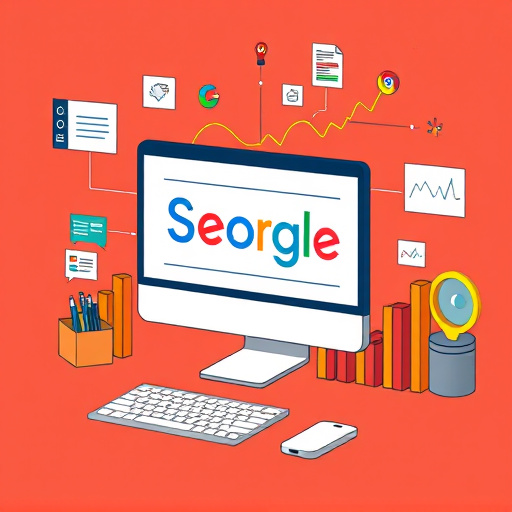
On-page SEO optimization boosts website rankings by focusing on content, meta tags, and HTML structu…….
Master On-Page SEO Tactics for Rapid Rankings
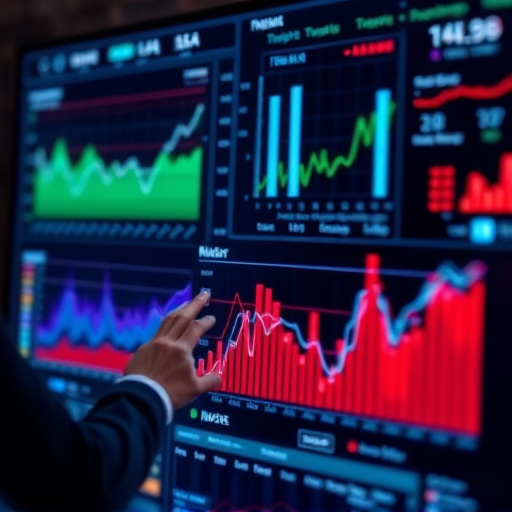
On-page SEO optimization is crucial for boosting website visibility and rankings on search engines l…….
Mastering Technical On-Page SEO Optimisation Secrets
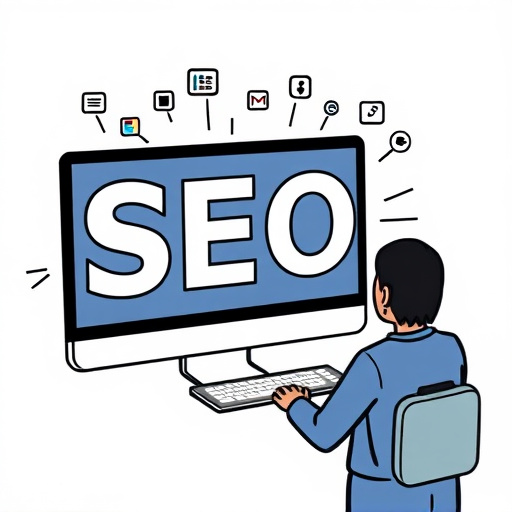
On-page SEO optimization is a strategic process for local businesses to boost search rankings and vi…….
Master On-Page SEO: Optimize Key Elements for Rankings
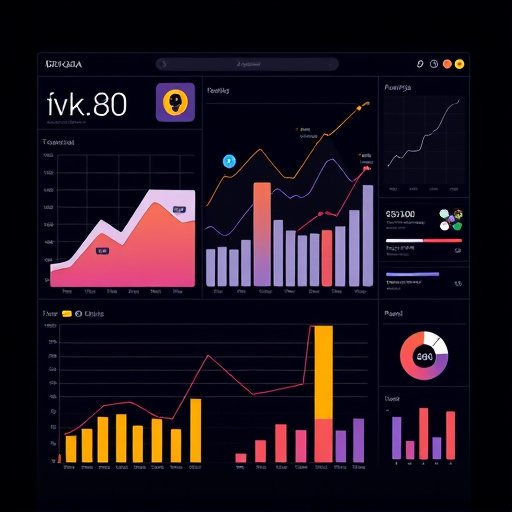
On-page SEO optimization involves refining website elements to boost relevance for users and search…….
Headers Play Key Role in On-Page SEO Optimization Success

Headers are vital for on-page SEO optimization, structuring content and guiding users/engines throug…….
Visual Content Boosts On-Page SEO Rankings
Master On-Page SEO Optimization Tips for Top Rankings
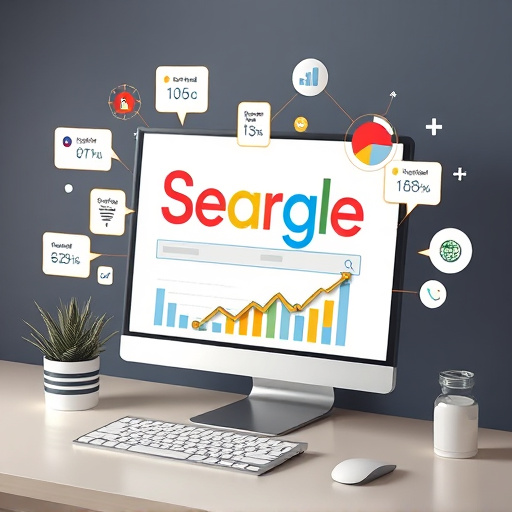
On-page SEO optimization involves optimizing website content and structure using targeted keywords,…….








